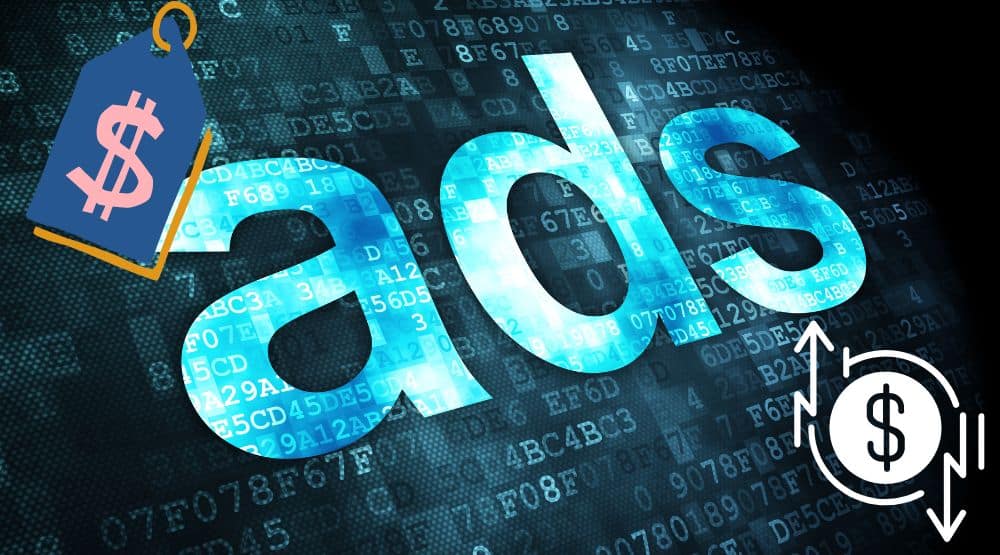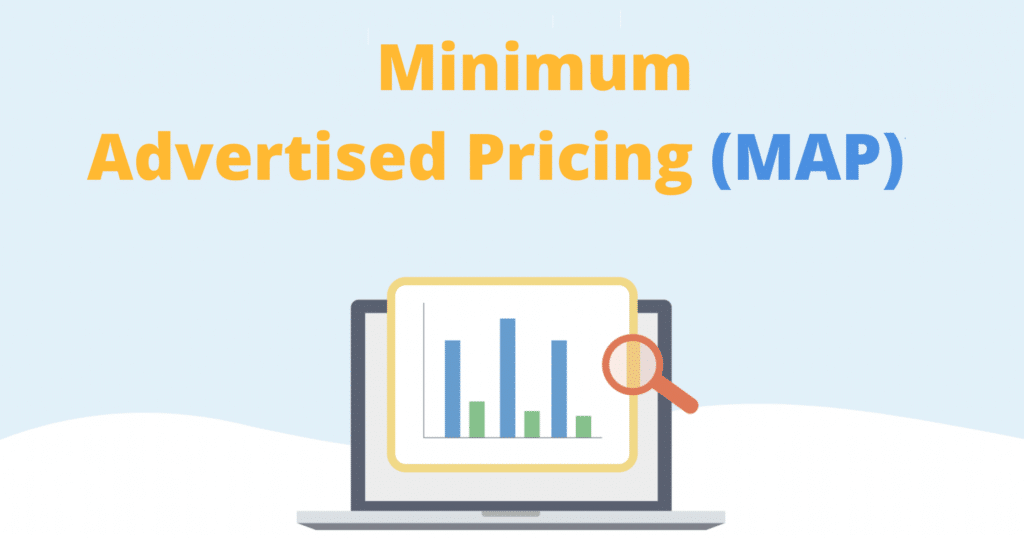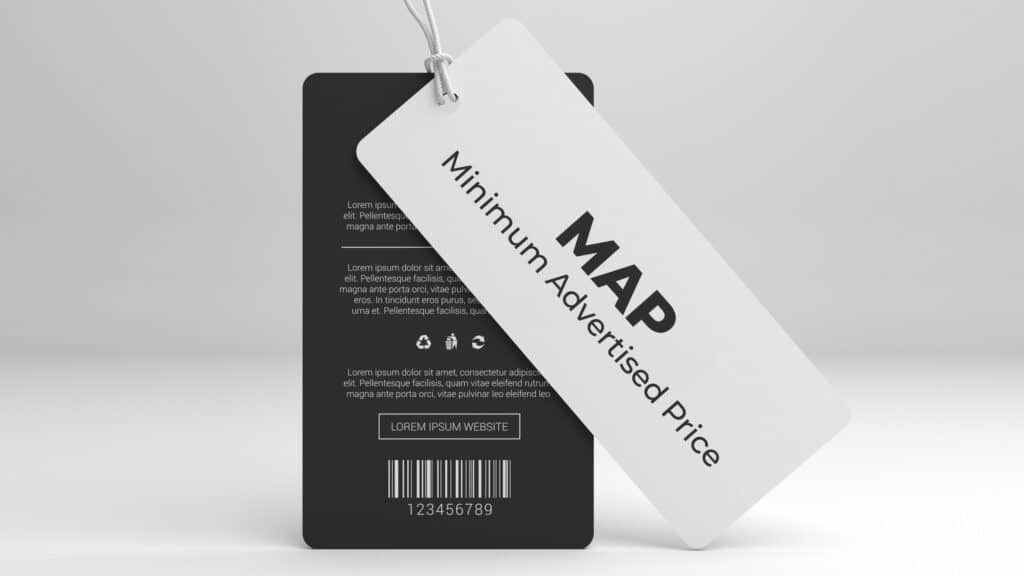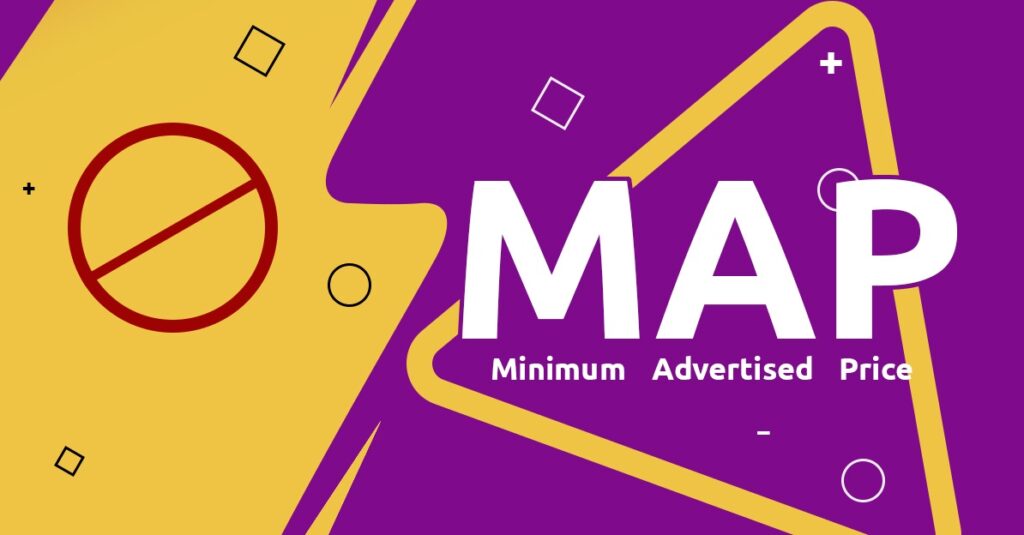Are you a producer, a retailer, the owner of a brand, or a customer who is interested in following commodity prices? You need to understand the notion of MAP Monitoring. Visit this page to Discover the significance of Minimum Advertised Price (MAP) Monitoring in the e-commerce landscape.
Learn how MAP Monitoring protects brand integrity, ensures fair competition, and shapes consumer perceptions. Whether you are a manufacturer, retailer, or brand owner, this guide will enlighten you on the intricacies of MAP Monitoring and its impact on your business.

Monitoring and managing the Minimum Advertised Price (MAP) has emerged as a crucial tactic for manufacturers and retailers alike in the fast-paced and cutthroat e-commerce environment. Understanding MAP monitoring is essential if you want to stay competitive, whether you're a brand attempting to retain the value of your product or a store wanting to keep good profit margins.
Imagine entering your favorite store with the eagerness to purchase the flashy new device you've been eyeing. But hold on, something is wrong. Your enthusiasm wanes when you discover that the cost is significantly higher than you had anticipated. You are let down and question why the store increased the price when it was listed for less elsewhere.
Unbeknownst to many customers, a potent idea known as Minimum Advertised Price (MAP) quietly shapes how things are priced and marketed behind the scenes. Although MAP may appear to be a commonplace industry word, monitoring it has significant effects on brand integrity, consumer perceptions, and the complex dance between producers, retailers, and consumers.
We will investigate the fascinating world of MAP monitoring in this interesting tour through the world of business. We're about to get into the complexity of this pricing scheme, so get ready to have your head blown. Consequently, revealing its mysteries and illuminating its significance in today's competitive marketplace.
What is MAP Monitoring?

Manufacturers and companies frequently use Minimum Advertised Price (MAP) monitoring to keep a tight grip on the market pricing of their products. Essentially, it is a policy that establishes the lowest price at which retailers or resellers may promote a specific good.
The goals of MAP monitoring are to safeguard the reputation of the brand, stop price erosion, and preserve healthy retailer competition. MAP monitoring entails continuously keeping an eye on and tracking a product's advertised prices on various online and offline channels, including e-commerce websites, social media sites, and physical stores. This procedure aids manufacturers in ensuring that the specified pricing policy is being followed by authorized retailers or resellers.
The major goal of MAP monitoring is to stop merchants from engaging in excessive price competition or from undercutting one another to the point that it detracts from the perceived value of the brand. Manufacturers can maintain consistent pricing across various sales channels and deter price wars that could hurt their brand positioning by establishing a minimum stated price.
The continuing process of MAP monitoring necessitates constant attention to detail and adjustment. To stay up with new advertising channels, pricing schemes, and consumer behaviour, the monitoring methods and technologies may also need to be changed as e-commerce develops and grows.
For manufacturers and their authorized retailers, MAP monitoring is essential for preserving fair competition, brand value, and consistent pricing. It promotes a positive business climate for retailers and ensures that consumers consistently and reliably perceive the brand and its products.
Why Do Sellers Brands and Manufacturers Need to Implement MAP Monitoring?

Let's examine the benefits of Minimum Advertised Price (MAP) monitoring for retailers, brands, and producers. MAP is a pricing strategy that determines the lowest price at which resellers may market a product. Here are some justifications for why MAP monitoring is crucial.
-
Protecting brand value:
Monitoring MAP contributes to preserving a brand's and the integrity of its products. Companies can stop price erosion and guarantee the market value of their goods by establishing a minimum price. It enables them to market their brand as having consistent value and quality.
-
Preserving profit margins:
The application of a MAP policy protects the profit margins for both producers and retailers. A minimum price requirement for shops aids in preventing undercutting, price wars, and excessive price competitiveness. Businesses can sustain their operations and maintain a healthy level of profitability in this way.
-
Ensuring fair competition:
Monitoring the MAP encourages resellers to compete fairly. Leveling the playing field, prevents a race to the bottom based only on price, giving all retailers an equal chance to sell goods. This enables companies to set themselves apart based on things like customer service, product expertise, or special selling points.
-
Strengthening channel partnerships:
Relationships between manufacturers and their authorized resellers can be improved via MAP monitoring. Manufacturers show their dedication to assisting their distribution partners by ensuring that resellers follow the minimum price. Understanding that their price efforts won't be compromised, stimulates cooperation, trust, and investment in marketing by resellers.
-
Controlling online marketplaces:
MAP monitoring is even more important in the e-commerce era. With numerous sellers competing for customers' attention, online markets may be very competitive. Manufacturers and brands may manage their online presence and stop unauthorized sellers from using predatory pricing, unapproved discounts, or selling counterfeit goods by setting MAP policies and keeping an eye on compliance.
-
Consumer perception and value:
Consumer perception of the product's quality and worth is aided by a consistent minimum advertised price. Prices that are too cheap can cast suspicion on authenticity or arouse worries about degraded quality. Brands can communicate value to consumers by maintaining a minimum price, ensuring that their products are viewed as attractive and dependable options.
Implementing MAP monitoring is essential for sellers, brands, and manufacturers to safeguard the value of their brands, maintain profit margins, promote fair competition, fortify alliances, maintain control over online marketplaces, and mould consumer perception. Businesses can successfully navigate the market while keeping their competitive edge by setting and enforcing minimum pricing.
What are the Pros and Cons of MAP Monitoring?
No matter how effective a policy, procedure, or tool is, someone can always find a way to criticize it. In other words, everything that has advantages also has disadvantages. Let's examine the benefits and drawbacks of MAP Monitoring in this context.
-
Pros of MAP Monitoring

Price Control: Manufacturers or brand owners can exercise control over the pricing of their products with the aid of MAP monitoring. By establishing a minimum stated price, businesses can prevent their items from losing value or becoming the target of store price wars. This pricing control keeps all vendors on an even playing field and preserves the brand's premium image.
Brand Image Protection: MAP monitoring aids in preserving the reputation and image of the brand by enforcing a minimum price. Customers are given the impression that a product is high-quality and valuable when prices are constant across all sales channels. It avoids the perception of low-quality or reduced goods, which over time can damage a brand's reputation.
Margin Preservation: Manufacturers and retailers can both benefit from MAP monitoring. It enables retailers to keep profit margins within realistic bounds without engaging in price wars. Instead of focusing only on price competition, manufacturers can encourage retailers to focus on delivering better customer service and value-added services by protecting their profit margins.
Channel Management: Manufacturers may efficiently manage their distribution routes by using MAP monitoring. They can promote healthy competition among merchants, prevent channel disputes, and make sure that all authorised sellers follow the pricing requirements by establishing a minimum price. This promotes a stronger, more cordial relationship between retailers and producers.
-
Cons of MAP Monitoring

Legal and Regulatory Challenges: Legal and regulatory issues may arise while implementing MAP monitoring, particularly in some areas. Manufacturers may be prohibited from setting minimum pricing by antitrust laws or price-fixing laws in some nations. Such laws can be broken, which can have negative legal repercussions and harm a brand's reputation.
Monitoring and Enforcement Costs: Monitoring MAP implementation necessitates a major investment of time and energy. To monitor and enforce compliance, manufacturers must spend money on employees, processes, and monitoring systems. Costly, especially for smaller businesses or manufacturers with limited resources.
Retailer Resistance: Retailers may oppose MAP policies, particularly if price competitiveness is their main marketing tactic. Some retailers may believe that setting minimum prices restricts their ability to draw clients or set themselves apart from rivals. Relationships may be strained as a result of this pushback between merchants and producers.
Online Pricing Challenges: Enforcing MAP standards is getting harder as e-commerce and online marketplaces grow in popularity. The minimum advertised price may be reduced by unauthorized sellers or third parties on online marketplaces, making it challenging to maintain price uniformity across all channels. The effectiveness of MAP monitoring efforts may suffer as a result.
Summarily, price control, brand image protection, margin preservation, and channel management are just a few advantages that MAP monitoring may provide. However, it also has to deal with issues including complicated legal matters, expensive monitoring, retailer resistance, and difficulties enforcing regulations in the internet market. Before introducing MAP monitoring, manufacturers should carefully weigh these advantages and disadvantages and develop plans to minimize any potential problems.
Why Do Retailers Often Violate the Policy of MAP Monitoring
MAP monitoring is often seen to be the responsibility of the brand or manufacturers, though violating the MAP policy is a thing of concern. And, this is channeled to the retailers. While some retailers may sincerely keep to their agreeable terms of adhering to MAP, some are sure not going to do that. Most times, keeping to this advertised price is not the issue, but the underlying challenges surrounding the market place not friendly. Even though abusing the laid down MAP monitoring policy will have a negative effect on the brand’s value and profit margin, the question is, WHY do retailers violate this policy in the first place?
In this section of the article, we would get down on some of the reasons why retailers violate the MAP Monitoring Policy.
-
Competitor Price

Foremost is the price competition. In an extremely saturated market, some retailers find it hard to beat the metrics of their immediate competitors. This in turn can make retailers cut down their prices to enable more sales and quick patronage. When this happens, the agreed minimum advertised price a brand established has been violated. The bad side to this is that it will affect other retailers who have stuck to their agreement with the manufacturers of the product.
-
Sales Promotion
Promotion is a market strategy many businesses use to boost sales, customers and to showcase what they sell. Oftentimes, what it takes to get a good return on sales is to discount prices. Knowing the promotional period to a retailer is a different part of the marketplace that needs keen interest, how the customers are being valued is also different.
Some retailers might have old products that needed to be replaced with new ones. With this, most retailers don’t care to break the agreed MAP policy by discounting the goods in-store. This will surely affect the brand credibility if it continues because the said discount is kicking against what has been the price earlier advertised publicly. Hence, no product price uniformity of the brand in the marketplace.
-
To Gain Customers Loyalty
Customers are said to be king and as a retailer your customer's loyalty is key. An increase in customers means a rise in market share and most of all sales. Many retailers violate the MAP policy because they want to spark a degree of trust in their buyers. As such, they try to reduce prices to give the customer a good deal to gain their loyalty, but in turn, slash out the profit margins of brands. As a result, violate the agreement made with the brand.
-
Unauthorized Reseller
Unauthorized resellers are yet another pain that hit below the belt. They are third-party reseller who has no official connection or affiliation to a certain brand but yet sell the company’s product in the marketplace. This is a serious issue that usually leads to retailers violating MAP policy. The first aim of a business is to make a profit, now tell me, how it will go for a retailer who has bought goods to trade and end up displaying the goods more than expected. Unauthorized resellers are also a trigger that makes some retailers go against the agreeable minimum advertised price of a brand. This is unpleasantly loud in the e-commerce stores.
-
Lack of MAP Policy Enforcement
Setting up a policy is one thing and implementing it is another. The consistency and strictness of a brand will speak audibly on whether or not they are in for business. Some products have an agreeable MAP policy drafted and accepted by the retailers when they decide to co-exist with the brand. However, because of the lack of rooted enforcement of this policy, some smart retailers who can spot the flexibility on the side of the manufacturer will surely abuse it.
They will throw the ball in their court, and prioritize their interest first knowing there is zero warnings and penalty. This is not good for a company that wants to build a better reputation. And also, not healthy for retailers that have no balls to pull such negative strings. Therefore, the lack of enforcement of the laid down MAP policy is another reason why retailers violate the minimum advertised price.
How to Monitor Retailers to Prevent Them from Violating MAP Policy to Protect Your Profit Margins
In this part of the article, we would give you three proven ways you can put a stop to retailers violating techniques on your brand's minimum advertised price. Though there are more, these three have yielded more results than others. These will not only help you protect your profit margins; they will further enable you to boost your brand credibility and reputation. Now, let’s get on it.
-
Manual MAP Monitoring

As a brand, you have to consistently and routinely monitor your MAP to know which retailers are abusing the agreed terms. This can be manually done by researching all the URLs of your product retailers and drafting them out on a product book. You keep doing this daily to be up to date on product prices. Although this can be extremely exhausting if the product you want to manually monitor has huge and vast retailers. Accuracy and effectiveness may not be viable here.
-
Using Web Scraper with Rotating Proxy
Another way a brand can monitor its retailers is through using web scrapers along with rotating proxies. Now how does this work? In MAP monitoring, it will serve as an intermediary to help the web scraper do its job properly.
Web scraper will extract every information that has to do with your product from every retailer’s website your product is being displayed and sold. Getting this right may not be easy if there’s no proxy to back the web scraping activities up.
There are several types of proxy, but a rotating proxy with a large IP pool will perform greatly here. The benefit of a rotating proxy is that it will change the IP address of every request you send. Unlike manual MAP monitoring, this is highly effective.
-
MAP Monitoring Software

Using MAP software is yet another. This is the most effective and efficient method to use among the three. Though it is as expensive as it is effective. MAP monitoring software is a tracking tool. What you would come to like is that they are automated and mostly on auto-pilot. Just set them properly, give your command and you are good to go.
Interestingly, instead of going all manual, the software tracks all pricing across all your retailers, checks if any MAP agreeable terms have been violated and notify you who, where, and how.
Additionally, this is done swiftly and efficiently within a short time, and between hundreds and thousands of the e-retail stores your products are sold. If you are a brand enforcing MAP policy, make sure to give this tool a try. It will save you time to build other aspects of your business and still protect your brand reputation and profit margins.
FAQs About MAP Monitoring
Q: Is MAP Monitoring Beneficial to Consumers?
The benefit of MAP monitoring to consumers is a two-way effect because it has both pros and cons. It can be beneficial in terms of zero competition price i.e., there will be fair play among the retailers leading to transparency of brand product prices in the marketplace. Product value is another advantage.
There won’t be fake and devalued products littering the market simply because there is no uniform price from the side of the retailers. In terms of the cons, since retailers have no right to set their prices, the ability of consumers to get a product for a quite impressive low price will be limited.
Q: Is it Legal for Retailers to Adhere to MAP Policies?
Minimum Advertised Price (MAP) policies are legal. It is implemented by brands, manufacturers, or suppliers to enable transparency and uniformity of product price in the marketplace. However, because this price is enforceable does not mean some retailers will completely adhere to it.
But so long as there is an agreement between the brand and the retailer, it is advisable to keep to the terms and avoid undercutting and promoting a different price. The relationship between retailers and the brand they stand for is important. And if this bond is broken, there might be a lack of trust leading strict manufacturers to take legal actions against retailers.
Q: Is it Only e-Stores that Use MAP Monitoring?
No, MAP monitoring is not limited to only e-stores. It cut across both offline and online retail enterprises, with inclusion in brick-and-mortar stores. The main aim of MAP is to set a uniform product price for retailers not abuse or violate the price on suppliers’ policy.
Therefore, not deprive them of their profit margins. Added to that, MAP is not restricted to e-Commerce stores alone, though it's more common with e-stores because of the ease and flexibility in price comparison online, it can be implemented in physical stores as well.
Q: Can Retailers Sell Goods Below the Set Price of MAP?
Although retailers are not allowed to spread their wings when it comes to MAP, some retailers will still go against the minimum advertised price. Why because the price advertised sometimes might not be the selling price for the product.
Hence, there is a thin line between the actual product price and the selling price. A retailer can at some point be allowed to sell products below MAP because they need to give their customers discounts among other benefits. This will require them to cut prices.
Though they are not allowed to promote or advertise their lower price publicly. This is because such acts of the retailer will put the brand’s product credibility and reputation in jeopardy. Also, note that it might not be welcome all the time as some brands are truly strict with their MAP policy.
Conclusion
MAP monitoring is paramount because it has good benefits for both the product manufacturers as well the retailers. Though the policy set around it cannot be completely adherent to by some retailers without violation, others keep to their agreeable terms made to the brand. In this article, we have revolved your thought around what MAP monitoring is, the pros and cons, why retailers violate the policy, and other important aspects you need to know to protect your profit margin as a brand.






